Sorted by date Results 26 - 50 of 55
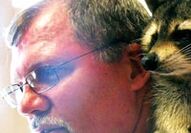
There are many things we think of when the word bat is spoken; such as Vampires, Dracula, rabies and diseases. Yes diseases are true but not as dramatic as is put out. All mammals can contract and carry rabies; however bats are not asymptomatic carriers of the disease. In reality, bats contract rabies far less than other animals. Less than 1/2 of 1% of all bats may contract the disease. A variety of wild animals (rabies vector species) can catch rabies, including foxes, skunks, raccoons,...

Ringtail cats are not related to the cat family but are members of the raccoon family, Procyonidae which also includes Kinkajous, and Coatimundis. Ringtails are cat sized animals that resemble a mix between a fox and a raccoon. The face is fox-like, with a pointed snout, and the body is raccoon-like and elongated. The top side of the animal is yellow to dark brown or black, and the underside is a whitish buff. The ears and eyes are large and the eyes are ringed by white fur. The tail is very...

The reclusive cougars — also called pumas, catamounts, mountain lions or panthers and, perhaps most fittingly, “ghost cats, is the second largest cat in North America. Unlike other big cats, however, the cougar cannot roar. Instead, the large feline purrs like a house cat. Cougars also have similar body types to house cats, only on a larger scale. They have slender bodies and round heads with pointed ears. They vary between, 5-9 ft from head to tail. While males can weigh up to 150 lb, fem...
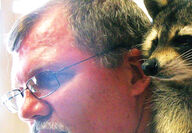
Disabled animals don't realize that they are handicapped: "I want to tell you a little bit about special needs raccoons (wildlife) and our disabilities. I have several handicapped raccoons, some are blind, and some are amputees, deaf and six with neurological (brain damage) from mild to severe. While working with these animals all these years I have come to the conclusion that we are a lot like them except it's harder for a human to accept disabilities and overcome them. The difference I see is...
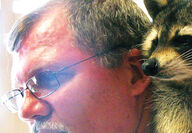
The Ring-tailed lemur (Lemur Catta) is a large prosimian (representing forms that were ancestral to monkeys, apes and humans), belonging to the family Lemuridae'. The name 'lemur' comes from the Roman festival 'Lemuria', during which ghosts were exorcised. It is descriptive of some lemurs' nocturnal habits, noiseless move-ments, reflective eyes, and ghost like cries and appearance. Today lemurs are known as 'ghosts of the forest.' Like all other lemurs, it is found only on the island of...
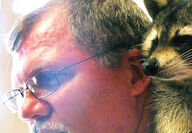
The coati is a medium-sized mammal only found on the American continent. The coati is found widely distributed across North, Central and South in a number of different habitats. The coati is primarily found in dense forests and wet jungles as the coati will spend a great deal of its life in the safety of the trees. However, there are also coati populations inhabiting grasslands, mountains and even deserts across the continent. Coatis are members of the Procyonidae family, a group of New World...
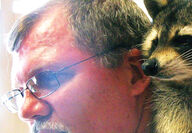
The kinkajous are from Central and South America, they primarily live in trees, hang by their tail, and love to eat fruit and honey. However, the kinkajou (Potos flavus) is not a primate. Actually more closely-related to raccoons, coatis and lemurs. Kinkajous are one of only two members of the Carnivora order with prehensile tails, the other being the binturong. Fully-grown kinkajous weigh 8-10 lbs and have a total body length of 16-24 inches. In addition, their powerful tails may equal or excee...

The Raccoon (Procyon lotor) is native to North and South America having a range that extends from Southern Canada to the northern reaches of Argentina. Raccoons have feral populations in Europe, especially Germany, where they escaped from fur farms and were set loose to be hunted for sport during the time of World War II. The raccoon gets its name from the Algonquin word arakun which means "one who scratches with his hands." Raccoons are plantigrade animals, walking on the entirety of their...
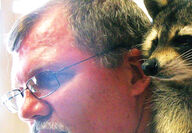
By DAVID K. NELSON, Supervising Wildlife Biologist, Division of Wildlife and Freshwater Fisheries and DR. M. KEITH CAUSEY, Ireland Professor of Wildlife Science, Auburn University, Retired "This article was published in the Spring of 2001 in "Alabama's TREASURED Forests" True wild pigs are not native to Alabama or the New World. Wild swine in North and South America, which may include European wild hogs, feral hogs and hybrids between the two have been introduced. Pigs were domesticated...

This month were are going to try to help you understand one of the most intelligent animals in the US. The raccoon. The Raccoon (Procyon lotor) is native to North and South America having a range that extends from Southern Canada to the northern reaches of Argentina. Raccoons have feral populations in Europe, especially Germany, where they escaped from fur farms and were set loose to be hunted for sport during the time of World War II. The raccoon gets its name from the Algonquin word arakun...
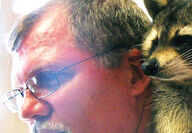
I felt this information would help everyone to see the wide picture and great wonders of this unique creature. So without further a due, this months fur baby is the Opossum lets pity the poor opossum. The oft-maligned marsupial definitely suffers from an image problem - it is frequently perceived more as a giant, dirty, scavenging rat rather than a cute creature of the wild. But whether you love them or hate them, North America's only marsupial has a set of unique characteristics that might...

The chipmunks are small, ground-dwelling members of the squirrel (Sciuridae) family known for their burrowing habits and love of nuts. Despite their size, chipmunks can cause significant damage to homes, yards, and farms. The average size of a chipmunk is: 2-6" long with a 3" tail; less than 1 lb. in weight. Their lifespan in the wild: 2-3 years Identifying Features: Shades of brown/ yellow/grey fur with white and black stripes down the back. There are 23 existing species of chipmunks all chipmu...
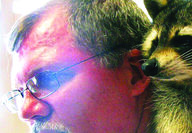
Over the years if people heard Wolf they would shutter with fear, because of the stories and urban legends we were brought up to believe such as Little Red Riding Hood, Three Little Pigs, and don't forget the greatest urban legend the Werewolf. The fear of getting bit by a wolf would surely turn you into a blood thirsty murderous werewolf preying on humans. So as you can see the wolf has lived with these stories and legends for centuries. The truth of the matter is wolfs are non aggressive by...
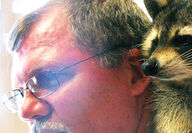
Many wild animals are cute, especially babies, and it might be tempting to try and care for one on your own. This is not a good idea! Wild animals can be aggressive and can carry parasites and diseases that may be transmissible to you or your companion animals. Wildlife rehabilitators have the facilities and knowledge to address the very specific needs of various wildlife species. These tips can help you decide whether to take action: 1. Signs that a wild animal needs your help. 2. Presented by...
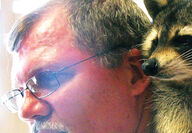
Grizzly bears have concave faces, a distinctive hump on their shoulders, and long claws about two to four inches long. The grizzlies have a life span of 20-30 years. The grizzly stand 6-8ft tall and males weigh 300-850 lbs and the females weigh 200-450 lbs. Both the hump and the claws are traits associated with a grizzly bear's exceptional digging ability. Grizzlies are often dark brown, but can vary from very light cream to black. The long guard hairs on their backs and shoulders frequently...
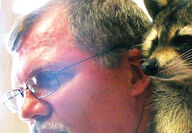
Fishers, found only in North America, occur in the northern coniferous and the mixed forests of Canada and the northern United States. Their range extends from the mountainous areas in the southern Yukon and Labrador Provinces southward to central California and Wyoming, the Great Lakes and Appalachian regions, and New England. The fisher lives in thick coniferous or mixed coniferous and hardwood forests. It prefers habitats with lots of tree cover and lots of hollow trees for dens. The fisher...
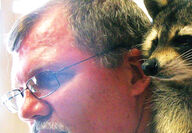
The wolverine is the mascot for the University of Michigan's football team and Michigan's state mammal. Wolverines look something like a mixture of a dog, a skunk, and a bear with short legs, long hair, and elongated snouts. Wolverines also have a distinctive mask of dark fur around their eyes and forehead, and a stripe of blond or ivory fur that runs from each shoulder to the base of the animal's tail. Wolverines are the largest of the weasel family. They are normally 26 to 34 inches from head...
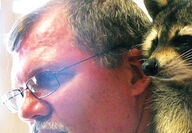
Disabled animals don't realize that they are handicapped: "I want to tell you a little bit about special needs raccoons (wildlife) and our disabilities. I have several handicapped raccoons, some are blind, and some are amputees, deaf and six with neurological (brain damage) from mild to severe. While working with these animals all these years I have come to the conclusion that we are a lot like them except it's harder for a human to accept disabilities and overcome them. The difference I see is...

There are many things we think of when the word bat is spoken; such as Vampires, Dracula, rabies and diseases. Yes diseases are true but not as dramatic as is put out. All mammals can contract and carry rabies; however bats are not asymptomatic carriers of the disease. In reality, bats contract rabies far less than other animals. Less than 1/2 of 1% of all bats may contract the disease. A variety of wild animals (rabies vector species) can catch rabies, including foxes, skunks, raccoons,...
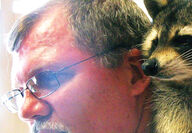
The muskrat is a large rodent that is about a foot to two feet long. It has a stocky body, a rounded head and a long, scaly black tail that is 7 to 12 inches long. Its tail is laterally flattened, that means it is flattened vertically! Its tail works like a rudder and helps the muskrat maneuver in the water! It has thick, soft, glossy, reddish-brown to dark brown fur on its upper sides and paler fur on its undersides. It has a thick coat of fur under its guard fur that is waterproof. It may...
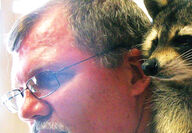
The porcupine is the prickliest of rodents, though its Latin name means "quill pig." There are about two dozen porcupine species, and all boast a coat of needle-like quills to give predators a sharp reminder that this animal is no easy meal. Some quills, like those of Africa's crested porcupine, are nearly a foot (30 centimeters) long. The North American porcupine is a large rodent it is actually North Americas second largest rodent the beaver is the largest. They have stout bodies and short...
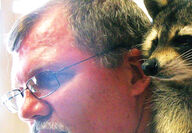
Squirrels are familiar to almost everyone. Yes, our cute squirrel friends are in fact part of a huge family of Squirrels (Sciuridae) which also makes them cousins of prairie dogs, the woodchucks, the amazing flying squirrel and both tree and ground squirrels. The Squirrels are pretty widespread too because their kin can be seen all over the trees, parks and woodlands across the globe- Australia, Asia and the Europe. There are more than 200 squirrel species live all over the world, with the notab...
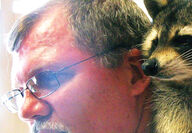
The nine-banded armadillo (Dasypus novemcinctus) cannot easily be confused with any other North American wild mammal. The armadillo's body is covered with an armored carapace or shell. The carapace is a double layer of horn and bone, segmented into three main divisions: an anterior scapular shield covering the shoulder; a posterior pelvic shield covering the hip region; and a middle section comprised of a series of bands connected by soft, infolded skin between the bands. The head and legs are...

As human society grows, animal habitat goes, and our homes are not just our own castles anymore. Looking for a place to raise their families, industrious raccoons, squirrels, and other small creatures gnaw and claw their way into roofs, attics, basements, vent pipes, and chimneys. They ask for so little: shelter from the elements, sustenance for their babies, a soft spot for nesting and nursing. The raccoons, squirrels, skunks, and other wild animals who find their way into the cracks and...

How many people know that in 2006 the Alabama State legislation designated the black bear as Alabama's official state mammal. The black bears, one of my all time favorite animals is very intelligent, shy, and secretive animals - actually seeing a bear in the wild is a very rare experience. Black bears are not always black - there are cinnamon, white (known as Spirit bears), beige, and "blue" (slate gray) black bears. Adult black bears vary considerably in size they can stand up to 6 feet tall an...